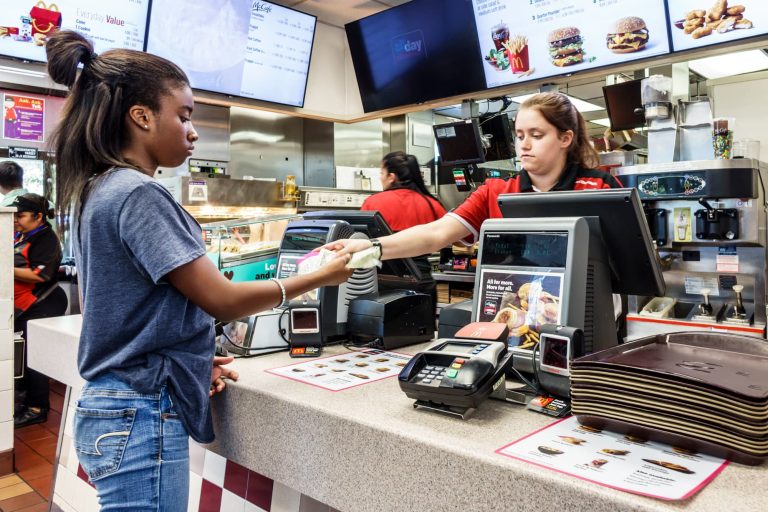Healthy Eating Hacks: Maximizing Nutrition From Your McDonald’s Favorites
How can you enjoy a quick meal at McDonald’s without compromising on health? With about 44 percent of Americans eating at fast food restaurants at least once per week, and six percent visiting daily as of 2016, it’s crucial to understand how to make healthier choices without sacrificing convenience.
This blog will explain in detail practical ways to maximize nutrition from McDonald’s favorites so that your indulgence in fast food binges is at par with your health goals. Learn to work the menu for better choices, adding a boost to nutrient value in your orders.
Maximizing Nutrition with Magnesium at McDonald’s
Meeting your objective for healthier options when ordering at McDonald’s should not rule out great nutrient intake, such as magnesium. Magnesium has several hundred applications within the human body. Magnesium can enable one to optimize nutritional value to better reach health and wellness goals.
How Much Magnesium Per Day?
The daily consumption quantity of magnesium is different for different ages and sexes:
- Adult men: 400-420 mg per day
- Adult women: 310-320 mg per day
While you may not be getting much magnesium from items on McDonald’s menu, you can make up for this deficiency by eating other types of food that are rich in magnesium.
Sucrosomial Magnesium Benefits
Sucrosomial magnesium is a highly bioavailable form of magnesium that offers several benefits:
- Improved absorption compared to other forms of magnesium
- Reduced gastrointestinal side effects
- Possible benefits to muscle function and recovery
Consider discussing with a healthcare professional whether supplementing with sucrosomial magnesium could be beneficial for your overall health, especially if you frequently consume fast food meals that may be lower in essential nutrients.
Identifying Healthier Menu Options at McDonald’s
When it comes to making healthier choices at McDonald’s, knowledge is power. Let’s break down the menu categories and explore some nutritious options you might not have considered.
Breakfast Items
Starting your day right is essential, and McDonald’s offers several breakfast options that can fit into a balanced diet:
- Egg McMuffin: This classic McMuffin satisfies 300 calories and 17 grams of protein.
- Fruit & Maple Oatmeal: This is a great source of fiber and general nutrition to get yourself going in the morning, all for 320 calories.
Burgers and Sandwiches
While burgers are typically associated with excess calories, there are ways to enjoy them more healthily:
- McChicken-without mayo: This sandwich is around 400 calories and hence represents a light alternative to the heavier burger options.
- Hamburger: A plain hamburger is also relatively low-calorie from the menu items and extra veggies can be added to it.
Salads and Sides
Don’t overlook the greener side of the menu:
- Side Salad: Adding vegetables to your meal without adding too much calorie intake.
- Apple Slices: Fresh and low-calorie alternative to fries for satisfying your sweet craving.
Beverages
Choosing the right drink can make a big difference in your overall calorie intake:
- Unsweetened Iced Tea: A refreshing, zero-calorie option.
- Water: Always the best choice for hydration without added calories.
Customizing Orders to Enhance Nutritional Value
Tips for a Healthier McDonald’s Meal:
- Skip the Sauce
- Many McDonald’s sauces are high in calories and sugars. Opt for no sauce or request it on the side to control how much you use.
- Add Extra Veggies
- Boost your meal’s fiber and nutrient content by asking for additional lettuce, tomatoes, or onions.
- Choose Grilled Over Fried
- Select grilled chicken instead of crispy to significantly reduce your fat intake.
- Downsize Your Portions
- Go for a regular-size burger rather than a double or triple patty to cut down on calories.
- Substitute Sides
- Swap out fries for apple slices to save around 150 calories.
By implementing these simple changes, you can enjoy your McDonald’s favorites in a healthier way that aligns with your nutritional goals.
Understanding McDonald’s Nutritional Information
McDonald’s offers a nutrition portal that has comprehensive nutrition details for over 100 of its menu items. This makes it easier for the consumer to make an informed choice. You could utilize this information by downloading and accessing their app, which will give you easy access to in-depth nutrition information on everything on the menu. You’ll be able to customize your order to see how that affects the nutrition inside and save your favorite order to quickly place it again in the future.
Whenever reading nutritional labels, serving sizes are always important to start with, to ensure the data applies to the entirety of a certain item one may consume. Also, note the calories to get a general idea of the energy amount in the item in question and macronutrients to get an idea about how well the protein, carbohydrates, and fats balance out.
Pay attention to sodium; most foods offered at fast food restaurants are extremely salty. This has implications for your heart health. And, again, beware of hidden calories in salad dressing, ketchup, cheese, and soft drinks that greatly add calories to your meal.
Strategies for Balancing Convenience and Health
Eating at McDonald’s doesn’t have to derail your health goals. Here are some strategies to help you balance convenience with nutritious choices:
- Plan: Check the menu and nutrition information before you go to make informed decisions.
- Practice portion control: Consider sharing a meal or saving half for later.
- Balance your day: If you know you will be eating at McDonald’s, make healthier choices for the other meals.
- Don’t come too hungry: Take some light, healthy food before coming so that you don’t overindulge in a lot of food.
- Hydrate yourself: Take a lot of water before and during the meal, which may help you feel full.
Leveraging Technology for Smarter Choices
Besides the McDonald’s app, many other online tools will permit you to make healthier choices in restaurants. Among them are nutrition tracking apps, which will enable you to: log meals from McDonald’s, track daily nutrient intake, set dietary goals, and monitor your progress.
Websites and apps dedicated to comparing fast food menus across chains are also great resources to help make the best choices when options are available. You could even use meal planning apps to make conscious decisions about incorporating McDonald’s meals into your overall, balanced diet for the week.
Frequently Asked Questions (FAQs)
What is the healthiest thing to eat at McDonald’s?
For healthier McDonald’s options, choose the Hamburger, Grilled Chicken Sandwich, or salad with light dressing. Opt for apple slices instead of fries and select the Egg McMuffin for a lower-calorie breakfast.
What is McDonald’s doing to promote healthy eating?
McDonald’s also promotes healthy choices by offering extra fruit and vegetable options and nutrition information on their menus.
Can I eat McDonald’s and still be healthy?
You can fit McDonald’s into a healthy diet by choosing lower-calorie and -fat items and paying attention to portion sizes.







